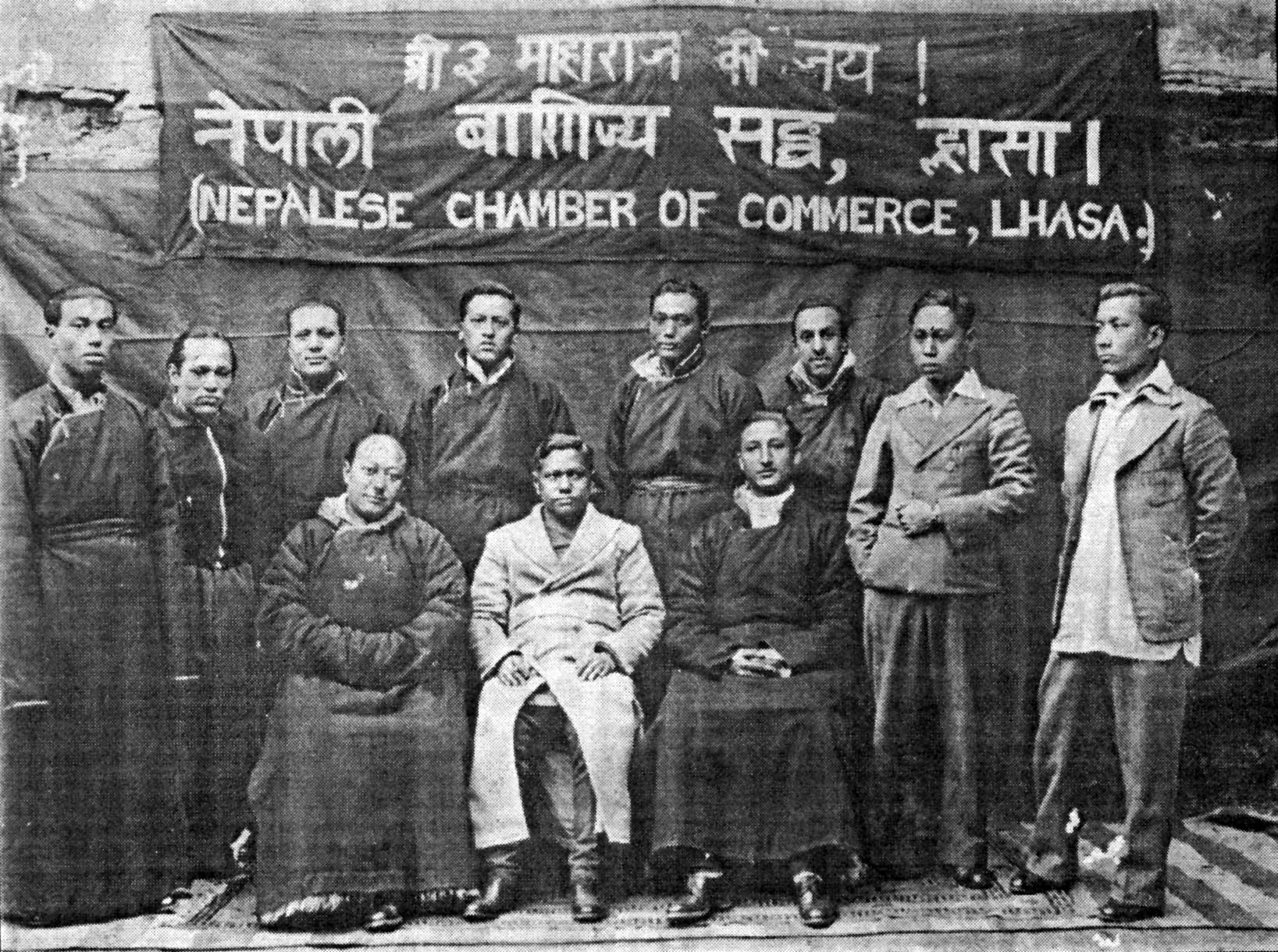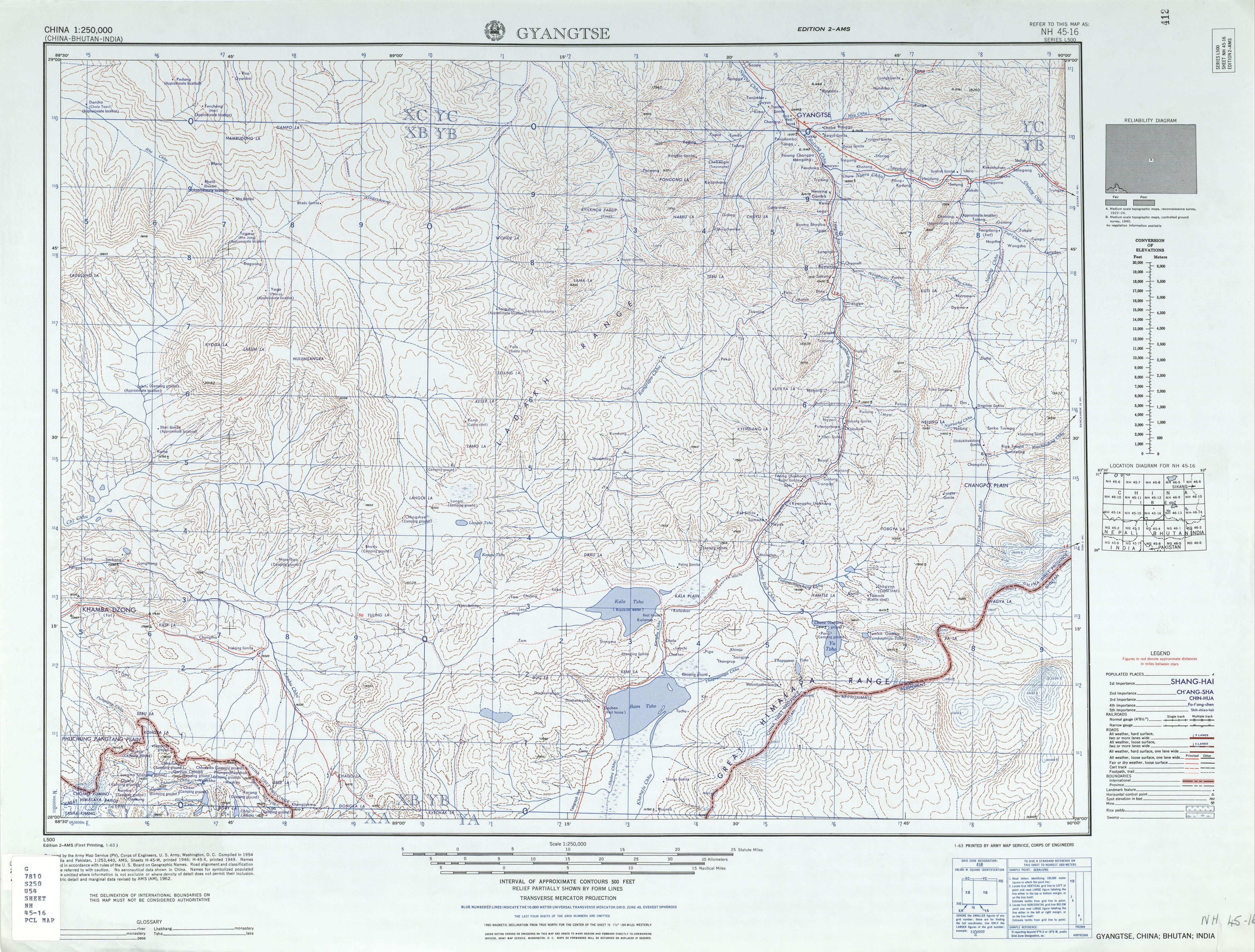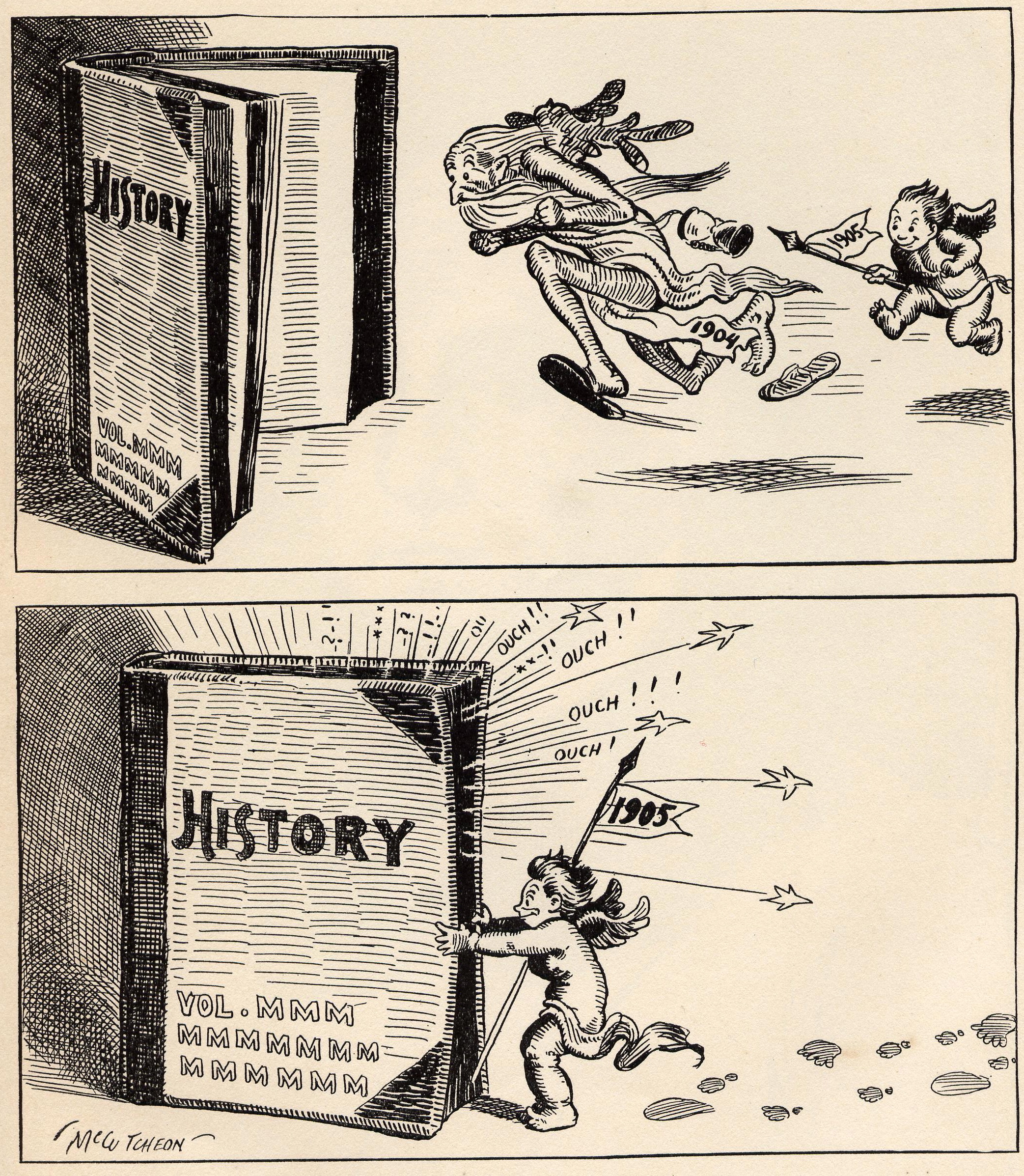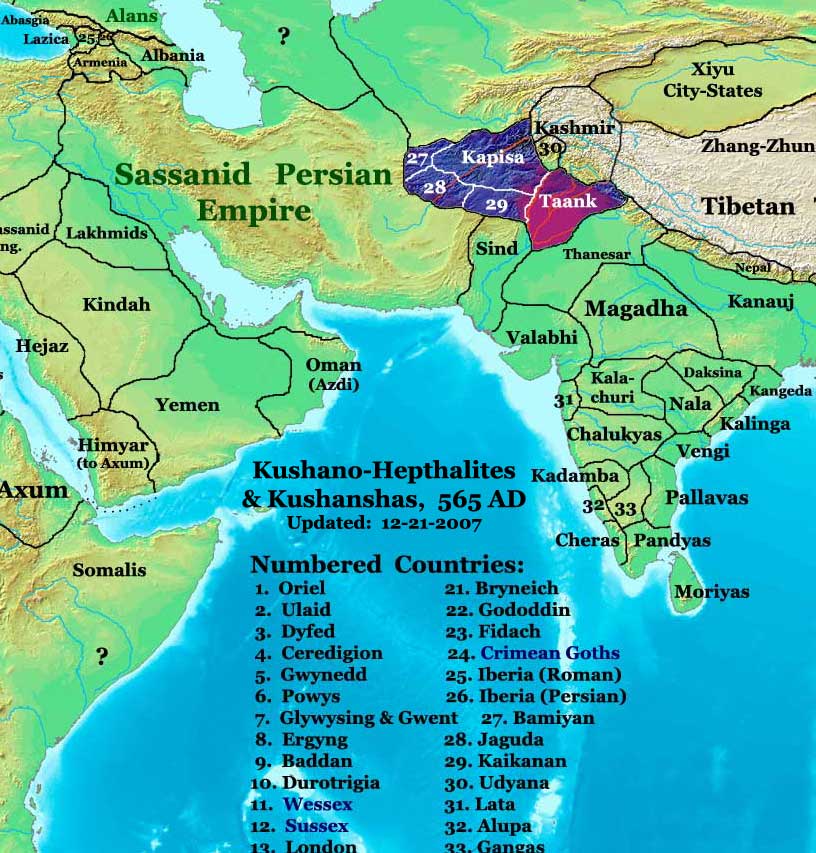|
Triratna Man Tuladhar
Triratna Man Tuladhar () (1905-1986) was one of the largest People of Nepal, Nepalese traders in traditional Tibet and the president of the Nepalese Chamber of Commerce, Lhasa in the 1940s. Early life Triratna Man (alternative name: Lhandur) was born at Nyata, Kathmandu, the eldest of the three sons of trader and philanthropist Dharma Man Tuladhar and mother Hera Lani Tuladhar. He was educated at home, and taught himself English and Chinese. He learned Tibetan and Hindi during his stay in Tibet and India. In 1913, he was married to Punya Maya Kansakar. Triratna Man was also an activist in the movement to revive Theravada Buddhism in Nepal; and in 1924, became a member of the Buddhist Relief Association founded by Buddhist scholar and leader Dharmaditya Dharmacharya. Business in Tibet Triratna Man belonged to a long line of Lhasa Newar (trans-Himalayan traders), Lhasa Newar merchants. His family owned a business house in Lhasa known as Chhusingsyar which has a history dating f ... [...More Info...] [...Related Items...] OR: [Wikipedia] [Google] [Baidu] |
Nepalese Chamber1943
Nepalese or Nepali may refer to something or someone of, from, or associated with the nation of Nepal. Concerning Nepal * Nepali people, citizens of Nepal * Nepali language, an Indo-Aryan language found in Nepal * Nepalese literature * Nepalese cuisine * Nepalese culture * Nepali cinema * Nepali music Other uses * Nepali (film), ''Nepali'' (film), a 2008 Indian Tamil-language film See also * * * Nepal (other) * Languages of Nepal {{disambiguation Language and nationality disambiguation pages ... [...More Info...] [...Related Items...] OR: [Wikipedia] [Google] [Baidu] |
Gyantse
Gyantse, officially Gyangzê Town (also spelled Gyangtse; ; ), is a town located in Gyantse County, Shigatse Prefecture, Tibet Autonomous Region, China. It was historically considered the third largest and most prominent town in Tibet (after Lhasa and Shigatse), but there are now at least ten larger Tibetan cities. History In 1904, the British expedition to Tibet reached Gyantse on 11 April. The town's garrison had already fled, and the expedition's members entered the town bloodlessly through the front gates, which were opened for them, and occupied Gyantse. After the town was occupied, several British officers visited the Palcho Monastery and seized several statues and scrolls. During the occupation, the town's inhabitants continued to go about their business, and the expedition's medical officer, Herbert James Walton, attended to their medical needs, including performing several operations to correct the common problem of cleft palates. The expedition's officers spent tim ... [...More Info...] [...Related Items...] OR: [Wikipedia] [Google] [Baidu] |
People From Kathmandu
The term "the people" refers to the public or common mass of people of a polity. As such it is a concept of human rights law, international law as well as constitutional law, particularly used for claims of popular sovereignty. In contrast, a people is any plurality of persons considered as a whole. Used in politics and law, the term "a people" refers to the collective or community of an ethnic group or nation. Concepts Legal Chapter One, Article One of the Charter of the United Nations states that "peoples" have the right to self-determination. Though the mere status as peoples and the right to self-determination, as for example in the case of Indigenous peoples (''peoples'', as in all groups of indigenous people, not merely all indigenous persons as in ''indigenous people''), does not automatically provide for independent sovereignty and therefore secession. Indeed, judge Ivor Jennings identified the inherent problems in the right of "peoples" to self-determination, as i ... [...More Info...] [...Related Items...] OR: [Wikipedia] [Google] [Baidu] |
1986 Deaths
The year 1986 was designated as the International Year of Peace by the United Nations. Events January * January 1 ** Aruba gains increased autonomy from the Netherlands by separating from the Netherlands Antilles. ** Spain and Portugal enter the European Community, which becomes the European Union in 1993. * January 11 – The Sir Leo Hielscher Bridges, Gateway Bridge in Brisbane, Australia, at this time the world's longest prestressed concrete free-cantilever bridge, is opened. * January 13–January 24, 24 – South Yemen Civil War. * January 20 – The United Kingdom and France announce plans to construct the Channel Tunnel. * January 24 – The Voyager 2 space probe makes its first encounter with Uranus. * January 25 – Yoweri Museveni's National Resistance Army Rebel group takes over Uganda after leading a Ugandan Bush War, five-year guerrilla war in which up to half a million people are believed to have been killed. They will later use January 26 as the official date ... [...More Info...] [...Related Items...] OR: [Wikipedia] [Google] [Baidu] |
1905 Births
As the second year of the massive Russo-Japanese War begins, more than 100,000 die in the largest world battles of that era, and the war chaos leads to the 1905 Russian Revolution against Nicholas II of Russia (Dmitri Shostakovich, Shostakovich's Symphony No. 11 (Shostakovich), 11th Symphony is subtitled ''The Year 1905'' to commemorate this) and the start of Revolution in the Kingdom of Poland (1905–07), Revolution in the Kingdom of Poland. Canada and the U.S. expand west, with the Alberta and Saskatchewan provinces and the founding of Las Vegas. 1905 is also the year in which Albert Einstein, at this time resident in Bern, publishes his four Annus Mirabilis papers, ''Annus Mirabilis'' papers in ''Annalen der Physik'' (Leipzig) (March 18, May 11, June 30 and September 27), laying the foundations for more than a century's study of theoretical physics. Events January * January 1 – In a major defeat in the Russo-Japanese War, Russian General Anatoly Stessel su ... [...More Info...] [...Related Items...] OR: [Wikipedia] [Google] [Baidu] |
Sikkim
Sikkim ( ; ) is a States and union territories of India, state in northeastern India. It borders the Tibet Autonomous Region of China in the north and northeast, Bhutan in the east, Koshi Province of Nepal in the west, and West Bengal in the south. Sikkim is also close to the Siliguri Corridor, which borders Bangladesh. Sikkim is the List of states and union territories of India by population, least populous and List of states and union territories of India by area, second-smallest among the Indian states. Situated in the Eastern Himalaya, Sikkim is notable for its biodiversity, including Alpine climate, alpine and subtropical climates, as well as being a host to Kangchenjunga, the List of mountains in India, highest peak in India and List of highest mountains on Earth, third-highest on Earth. Sikkim's Capital (political), capital and largest city is Gangtok. Almost 35% of the state is covered by Khangchendzonga National Park – a UNESCO World Heritage Site. The Kingdom of Si ... [...More Info...] [...Related Items...] OR: [Wikipedia] [Google] [Baidu] |
Sino-Indian War
The Sino–Indian War, also known as the China–India War or the Indo–China War, was an armed conflict between China and India that took place from October to November 1962. It was a military escalation of the Sino–Indian border dispute. Fighting occurred along India's border with China, in India's North-East Frontier Agency east of Bhutan, and in Aksai Chin west of Nepal. There had been a series of border skirmishes between the two countries after the 1959 Tibetan uprising, when India granted asylum to the Dalai Lama. Chinese military action grew increasingly aggressive after India rejected proposed Chinese diplomatic settlements throughout 1960–1962, with China resuming previously banned "forward patrols" in Ladakh after 30 April 1962. Amidst the Cuban Missile Crisis, seeing that the U.S. was pre-occupied with dealing with it, China abandoned all attempts towards a peaceful resolution on 20 October 1962,''Webster's Encyclopedic Unabridged Dictionary of the English ... [...More Info...] [...Related Items...] OR: [Wikipedia] [Google] [Baidu] |
Pratek Man Tuladhar
Pratek Man Tuladhar () (1924–1991) was a Nepalese trader and philatelist. Born in Kathmandu into a family of hereditary merchants, he spent his youth in Lhasa, Tibet, where they owned a business house. During his stay in Tibet (1939–1960), alongside his main occupation of conducting trade between India, Nepal and Tibet, he developed an avid interest in collecting photographs, postage stamps and coins. Tuladhar also corresponded with penpals around the world. As a rare letter writer from Tibet, his name became renowned worldwide among philatelists. His letters bearing Tibetan stamps delighted his foreign friends, and today they have become major resources for collectors specializing in Tibetan postal history. Biography Pratek Man was the eldest of the three children of father Triratna Man Tuladhar and mother Punya Maya Kansakar. His grandfather was the celebrated trader and philanthropist Dharma Man Tuladhar. His younger sister, Tara Devi Tuladhar, was a social worker. Pra ... [...More Info...] [...Related Items...] OR: [Wikipedia] [Google] [Baidu] |
Ladakh
Ladakh () is a region administered by India as a union territory and constitutes an eastern portion of the larger Kashmir region that has been the subject of a Kashmir#Kashmir dispute, dispute between India and Pakistan since 1947 and India and China since 1959.The application of the term "administered" to the various regions of Kashmir and a mention of the Kashmir dispute is supported by the WP:TERTIARY, tertiary sources (a) through (e), reflecting WP:DUE, due weight in the coverage. Although "controlled" and "held" are also applied neutrally to the names of the disputants or to the regions administered by them, as evidenced in sources (h) through (i) below, "held" is also considered politicised usage, as is the term "occupied", (see (j) below). (a) (subscription required) Quote: "Kashmir, region of the northwestern Indian subcontinent ... has been the subject of dispute between India and Pakistan since the partition of the Indian subcontinent in 1947. The northern and wester ... [...More Info...] [...Related Items...] OR: [Wikipedia] [Google] [Baidu] |
Kolkata
Kolkata, also known as Calcutta ( its official name until 2001), is the capital and largest city of the Indian state of West Bengal. It lies on the eastern bank of the Hooghly River, west of the border with Bangladesh. It is the primary financial and commercial centre of eastern and northeastern India. Kolkata is the seventh most populous city in India with an estimated city proper population of 4.5 million (0.45 crore) while its metropolitan region Kolkata Metropolitan Area is the third most populous metropolitan region of India with a metro population of over 15 million (1.5 crore). Kolkata is regarded by many sources as the cultural capital of India and a historically and culturally significant city in the historic region of Bengal.————— The three villages that predated Calcutta were ruled by the Nawab of Bengal under Mughal suzerainty. After the Nawab granted the East India Company a trading license in 1690, the area was developed by ... [...More Info...] [...Related Items...] OR: [Wikipedia] [Google] [Baidu] |
Kalimpong
Kalimpong is a town and the headquarters of an eponymous district in the Indian state of West Bengal. It is located at an average elevation of . The town is the headquarters of the Kalimpong district. The region comes under Gorkhaland Territorial Administration which is an autonomous governing body within the state of West Bengal. The Indian Army's 27 Mountain Division is located on the outskirts of the city. Kalimpong is known for its educational institutions, many of which were established during the British colonial period. It used to be a gateway in the trade between Tibet and India before China's annexation of Tibet and the Sino-Indian War. Kalimpong and neighbouring Darjeeling were major centres calling for a separate Gorkhaland state in the 1980s, and more recently in 2010. The municipality sits on a ridge overlooking the Teesta River and is a tourist destination owing to its temperate climate, natural environment and proximity to popular tourist locations in the ... [...More Info...] [...Related Items...] OR: [Wikipedia] [Google] [Baidu] |
Phari
Phari or Pagri (; ) is a town in Yadong County in the Tibet Autonomous Region, China near the border with Bhutan. The border can be accessed through a secret road/trail connecting Tsento Gewog in Bhutan () known as Tremo La. the town had a population of 2,121. It is one of the highest towns in the world, being about above sea-level at the head of the Chumbi Valley. History Thomas Manning, the first Englishman to reach Lhasa, visited Pagri from 21September until 5November 1811 and had this to say about his room in the town: "Dirt, dirt, grease, smoke. Misery, but good mutton." The Pagri Fortress (''Dzong'') was located here and was important for the government as it stood between Tibet and Bhutan. Pagri was a staging area en route to Gyantse and ultimately Lhasa. Thubten Ngodup, the current Nechung Oracle, was born in Phari in 1957. Gallery File:Bundesarchiv Bild 135-S-06-06-22, Tibetexpedition, Blick auf Phari Dzong.jpg File:Phari Dzong in 1903.jpg, Phari Dzong in 1903 du ... [...More Info...] [...Related Items...] OR: [Wikipedia] [Google] [Baidu] |









